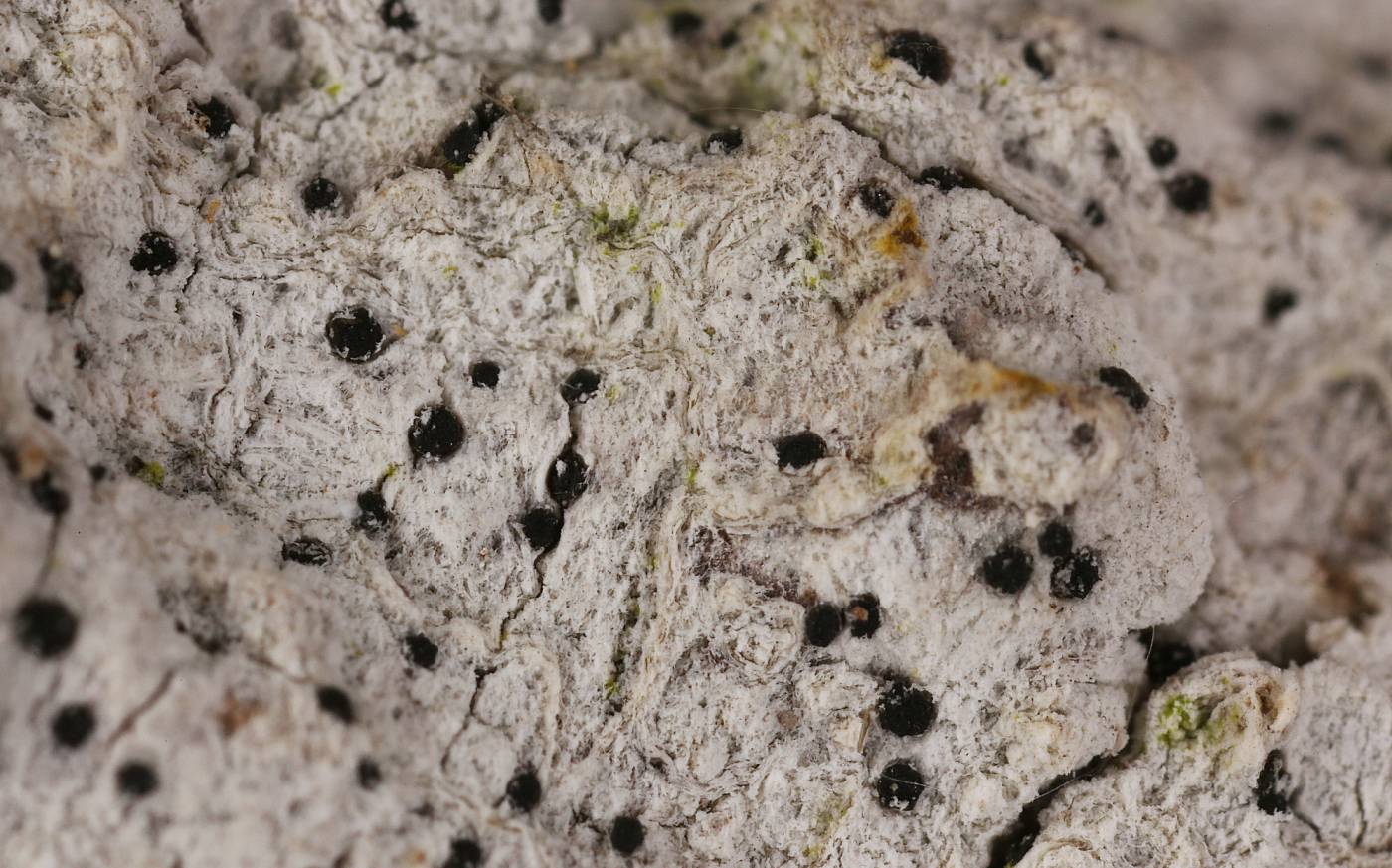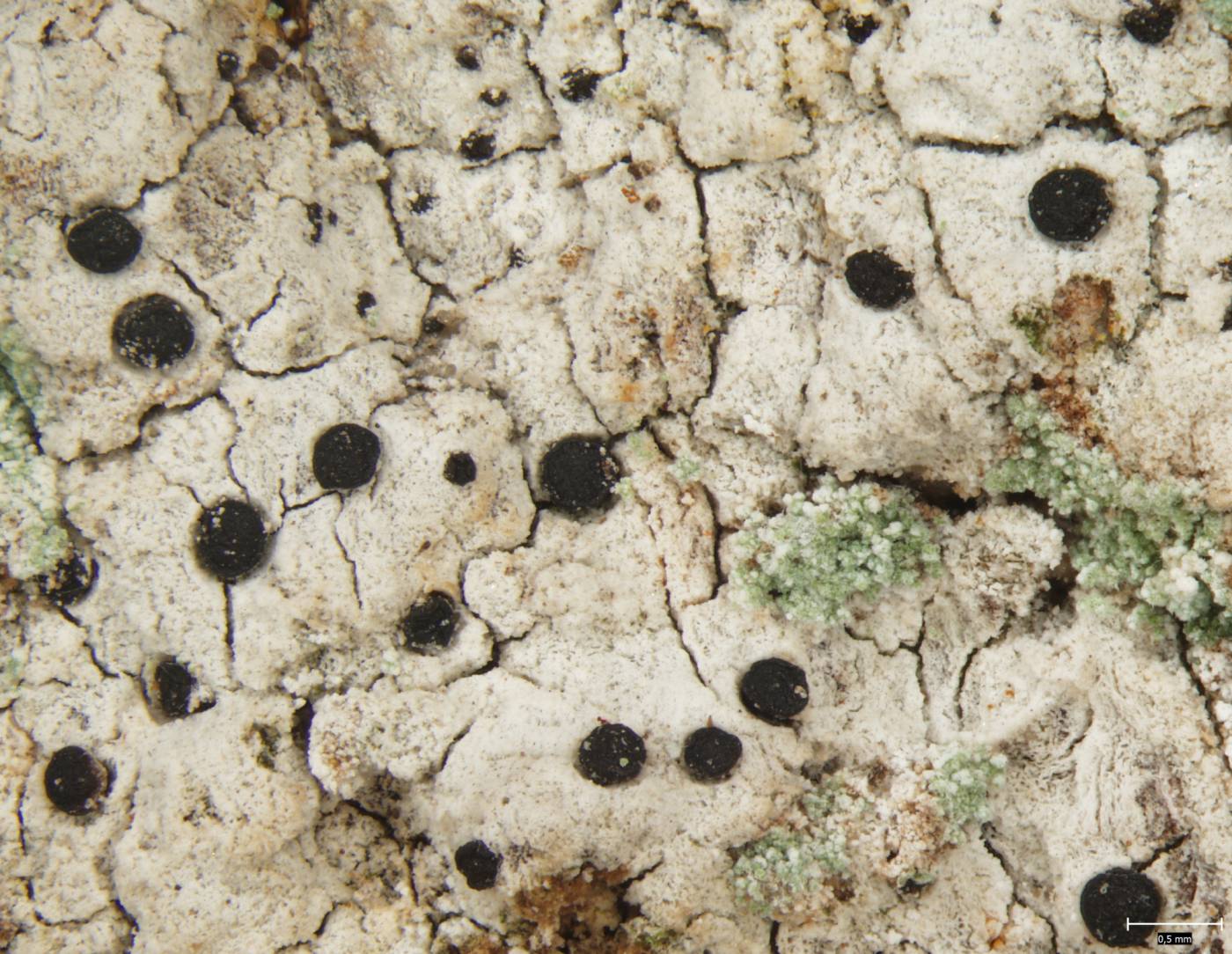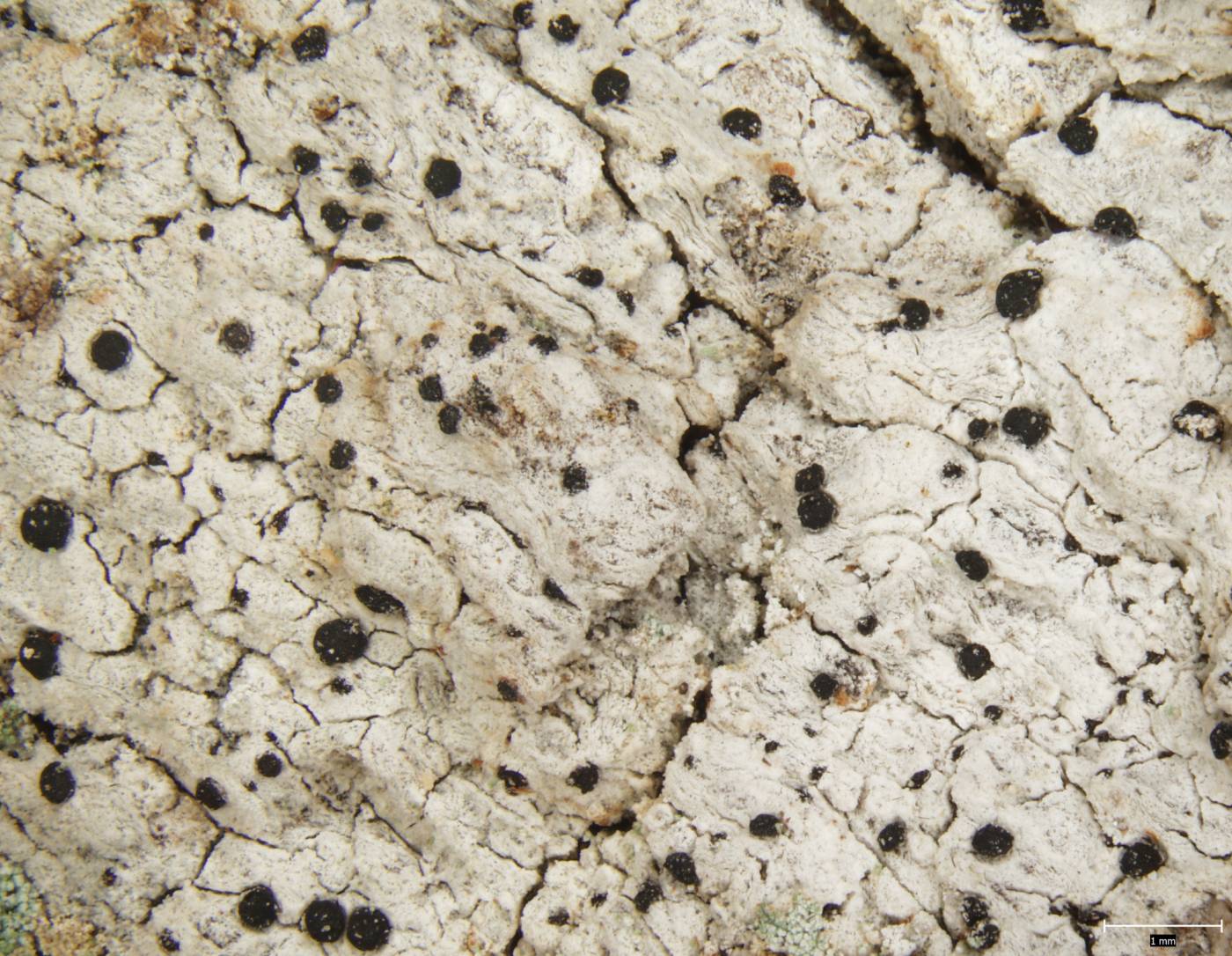A species characterized by chalk-white corticate thallus and black, partly immersed apothecia with long ascospores. The spores quickly disintegrate into separate, shortly cylindrical, 3–8 μm long fragments. It is a sensitive lichen, associated with well-preserved oak-hornbeam forests and riparian forests with old oaks, on which it most commonly occurs. Bactrospora dryina grows on rain-protected trunks and in deep cracks in the bark. It is widely distributed in temperate to Mediterranean-Atlantic areas of Europe. It had long been lost in the Czech Republic and was rediscovered after more than a hundred years in the 1990s (Malíček et al. 2014). It is currently known from a couple of localities; the Vltava River valley north of České Budějovice, the Třeboň, Litovelské Pomoraví and Soutok regions. The historical records mostly come from the 19th century (see the Vězda & Liška 1999 catalogue). There is a single record from the 20th century from the surrounding of Kroměříž (Picbauer 1906, unpublished) which was erroneously cited in the monography of Egea & Torrente (1993). A similar species, B. corticola, differing in K/I- excipulum and shorter spore fragments, occurs in Northern Europe. Its presence in the Czech Republic is not probable.
Literature: Egea J. M. & Torrente P. (1993): The lichen genus Bactrospora. – Lichenologist 25: 211–255. Malíček J., Palice Z. & Vondrák J. (2014): New lichen records and rediscoveries from the Czech Republic and Slovakia. – Herzogia 27: 257–284.
taxonomic classification:Ascomycota → Arthoniomycetes → Arthoniales → incertae sedis Arthoniales → Bactrospora
Red List (Liška & Palice 2010):CR – critically endangered
Red List (Malíček 2023):C1 – critically endangered
Occurrence in the Czech Republic
All records: 16, confirmed 16. One click on a selected square displays particular record(s), including their source(s).



